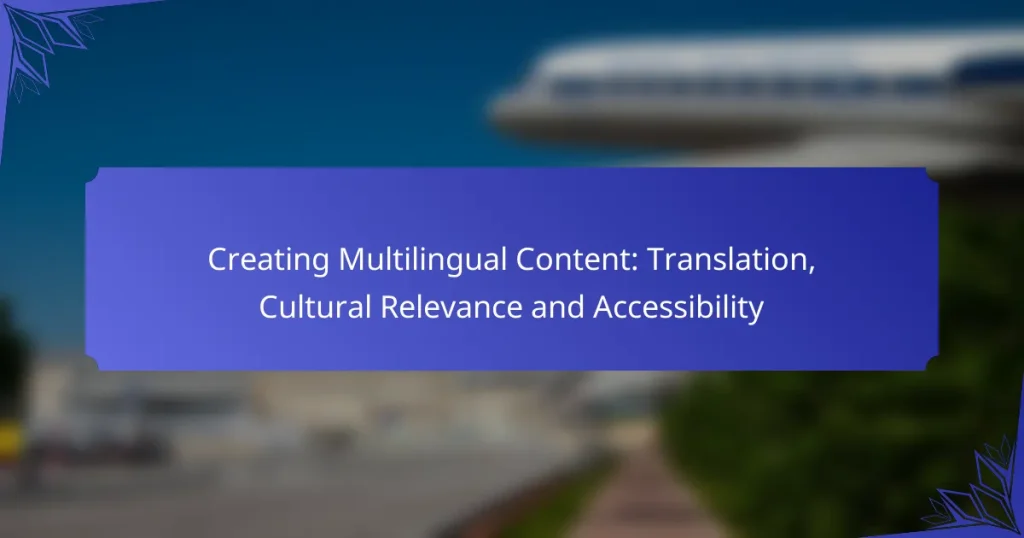Creating effective multilingual content requires a thoughtful approach to translation, localization, and cultural relevance to engage diverse audiences meaningfully. By prioritizing these elements, you can enhance accessibility and ensure that your message resonates across different languages and regions.
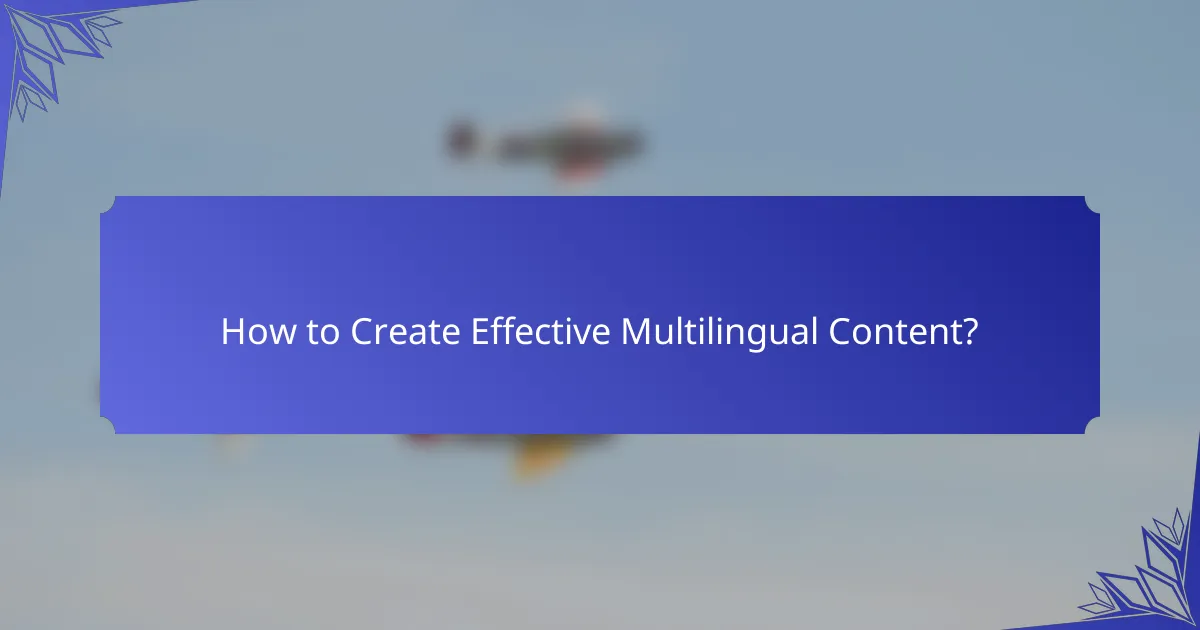
How to Create Effective Multilingual Content?
Creating effective multilingual content involves careful translation, localization, and cultural consideration to ensure that your message resonates with diverse audiences. Prioritizing these elements can enhance user engagement and accessibility across different languages and regions.
Utilize Professional Translation Services
Using professional translation services is crucial for producing high-quality multilingual content. These services employ skilled linguists who understand the nuances of language, ensuring accurate translations that maintain the original message’s intent.
Consider partnering with agencies that specialize in your industry to leverage their expertise. This can help avoid common pitfalls, such as mistranslations or cultural misinterpretations, which can damage your brand’s reputation.
Implement Localization Strategies
Localization goes beyond translation; it adapts content to fit the cultural context of the target audience. This includes modifying images, colors, and even layout to align with local preferences and norms.
For example, a marketing campaign that works well in the U.S. may need adjustments for European audiences, such as changing currency from USD to EUR. Always research local customs and regulations to ensure compliance and relevance.
Focus on Cultural Relevance
Cultural relevance is essential for connecting with your audience. Understanding local customs, traditions, and values can help tailor your content to resonate more deeply.
Incorporate local idioms or references that your audience will appreciate. For instance, using local holidays or events in your messaging can create a stronger bond with the audience, making your content feel more relatable and engaging.
Ensure Accessibility Standards
Accessibility should be a priority in multilingual content creation. Adhering to established standards, such as the Web Content Accessibility Guidelines (WCAG), ensures that your content is usable for individuals with disabilities.
Consider providing alternative text for images, captions for videos, and ensuring that your website is navigable via keyboard. This not only improves user experience but also broadens your reach to include diverse audiences, enhancing overall engagement.
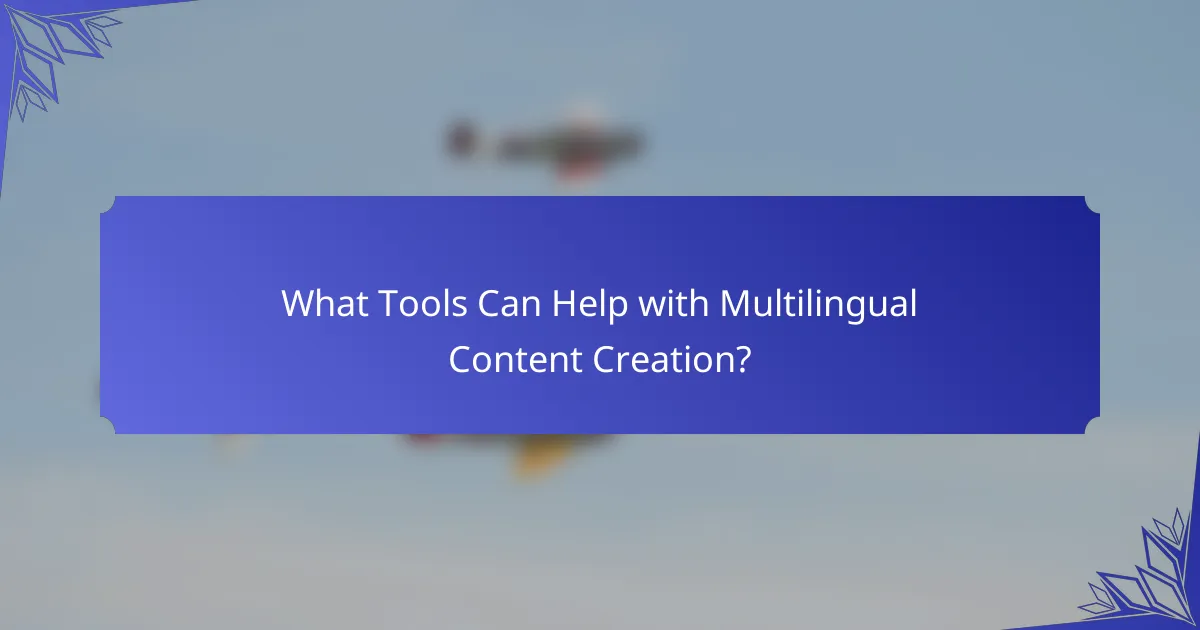
What Tools Can Help with Multilingual Content Creation?
Several tools can significantly enhance the process of creating multilingual content by streamlining translation, ensuring cultural relevance, and improving accessibility. Utilizing the right software can save time and improve the quality of your translations.
Google Translate for Initial Drafts
Google Translate is a popular tool for generating initial drafts of content in multiple languages quickly. It uses advanced algorithms to provide translations that can serve as a starting point for further refinement.
While it is convenient, keep in mind that the accuracy may vary, especially with idiomatic expressions or specialized terminology. Always review and edit the output to ensure it meets your standards and is culturally appropriate.
SDL Trados for Professional Translation
SDL Trados is a comprehensive translation management system designed for professional translators. It offers features like translation memory, terminology management, and quality assurance checks, making it ideal for large projects requiring consistency and accuracy.
Using SDL Trados can significantly reduce translation time and costs over time, as previously translated segments can be reused. However, it may require a learning curve and investment, making it best suited for businesses with ongoing translation needs.
Transifex for Collaborative Localization
Transifex is a cloud-based localization platform that facilitates collaboration among teams working on multilingual content. It allows multiple users to contribute translations and provides tools for managing projects efficiently.
This platform is particularly useful for software and web applications, as it supports continuous localization, enabling updates to be translated as they occur. Consider using Transifex if you have a team of translators or if your content is frequently updated.
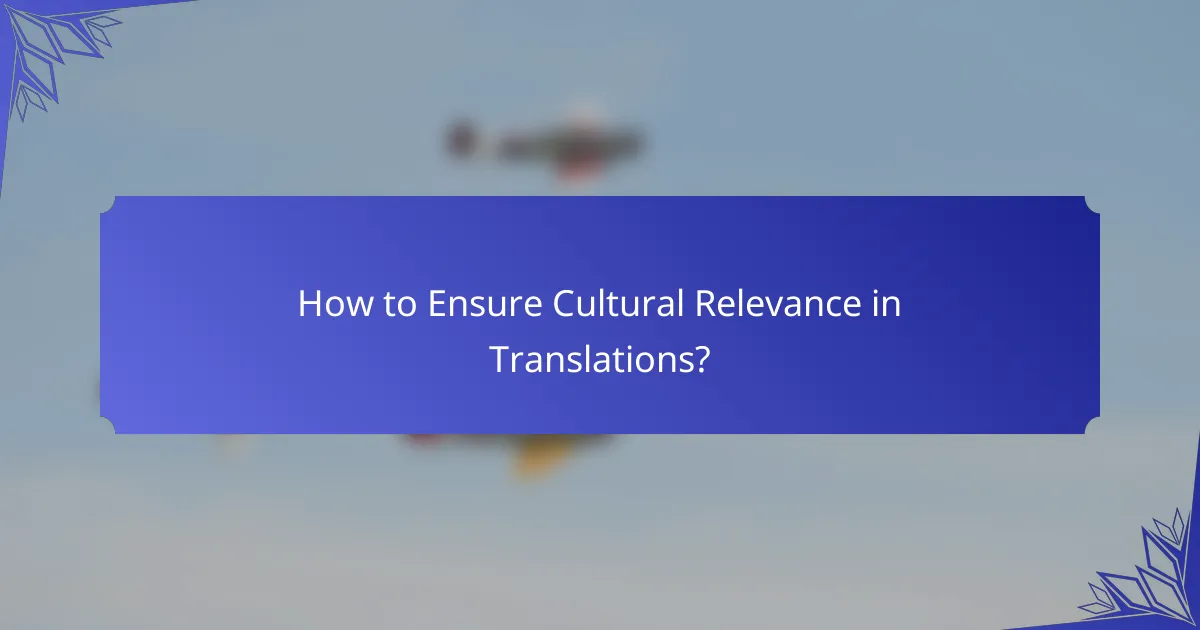
How to Ensure Cultural Relevance in Translations?
Ensuring cultural relevance in translations involves understanding the target audience’s values, beliefs, and social norms. This process enhances the effectiveness of the content and fosters a deeper connection with the audience.
Conduct Audience Research
Audience research is crucial for identifying the preferences and expectations of your target demographic. Utilize surveys, focus groups, and social media analytics to gather insights about cultural nuances and language use.
Consider factors such as age, gender, and regional dialects, as these can significantly influence how your message is received. Tailor your content based on these findings to resonate more effectively with your audience.
Engage Local Experts
Involving local experts can greatly enhance the cultural relevance of your translations. These individuals possess in-depth knowledge of local customs, idioms, and sensitivities that may not be apparent to outsiders.
Collaborate with translators who are native speakers and familiar with the cultural context. Their expertise can help avoid misinterpretations and ensure that the content aligns with local expectations.
Adapt Content to Local Norms
Adapting content to local norms involves modifying language, imagery, and references to fit cultural standards. This may include changing idiomatic expressions or using culturally appropriate examples that resonate with the audience.
Be mindful of local regulations and sensitivities, such as avoiding controversial topics or imagery that may be deemed offensive. This approach not only enhances relatability but also builds trust with your audience.
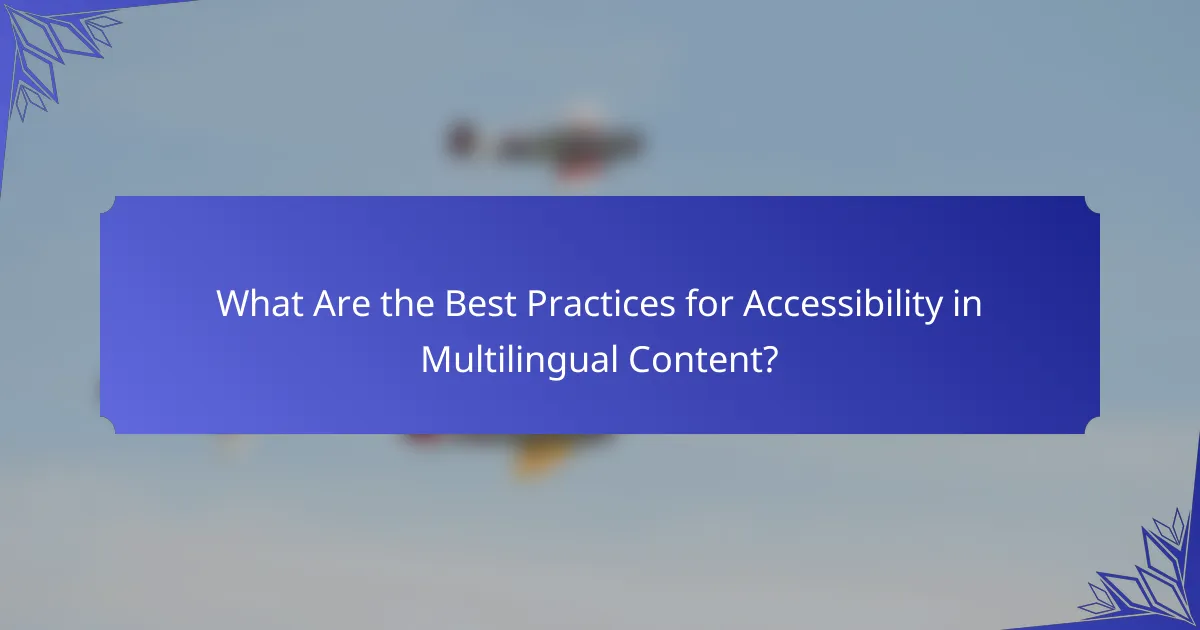
What Are the Best Practices for Accessibility in Multilingual Content?
Best practices for accessibility in multilingual content ensure that all users, regardless of language or ability, can access and understand the information. Key strategies include using descriptive alt text for images, ensuring compatibility with screen readers, and adhering to established accessibility guidelines.
Use Alt Text for Images
Alt text provides a textual description of images, making content accessible to users who rely on screen readers. When creating multilingual content, ensure that alt text is translated accurately and conveys the same meaning as the original language. This helps maintain the context and relevance of the images across different languages.
For example, if an image depicts a cultural event, the alt text should describe the event’s significance in both the original and translated versions. Avoid generic phrases like “image of” and instead focus on specific details that enhance understanding.
Implement Screen Reader Compatibility
Screen readers convert text to speech, allowing visually impaired users to navigate content. To ensure compatibility, use proper HTML markup and structure, including headings, lists, and tables. This organization helps screen readers interpret the content correctly, regardless of the language.
Test your multilingual content with various screen readers to identify any issues. Pay attention to how different languages are pronounced and ensure that the reading order is logical and coherent, which can vary between languages.
Follow WCAG Guidelines
The Web Content Accessibility Guidelines (WCAG) provide a framework for making web content more accessible. These guidelines emphasize principles such as perceivable, operable, understandable, and robust content. When creating multilingual content, ensure that translations meet these criteria to enhance accessibility for all users.
Regularly review your content against WCAG standards, focusing on aspects like contrast ratios, text alternatives, and navigational ease. Consider conducting user testing with diverse groups to gather feedback on accessibility in different languages, ensuring that your content is inclusive and effective.
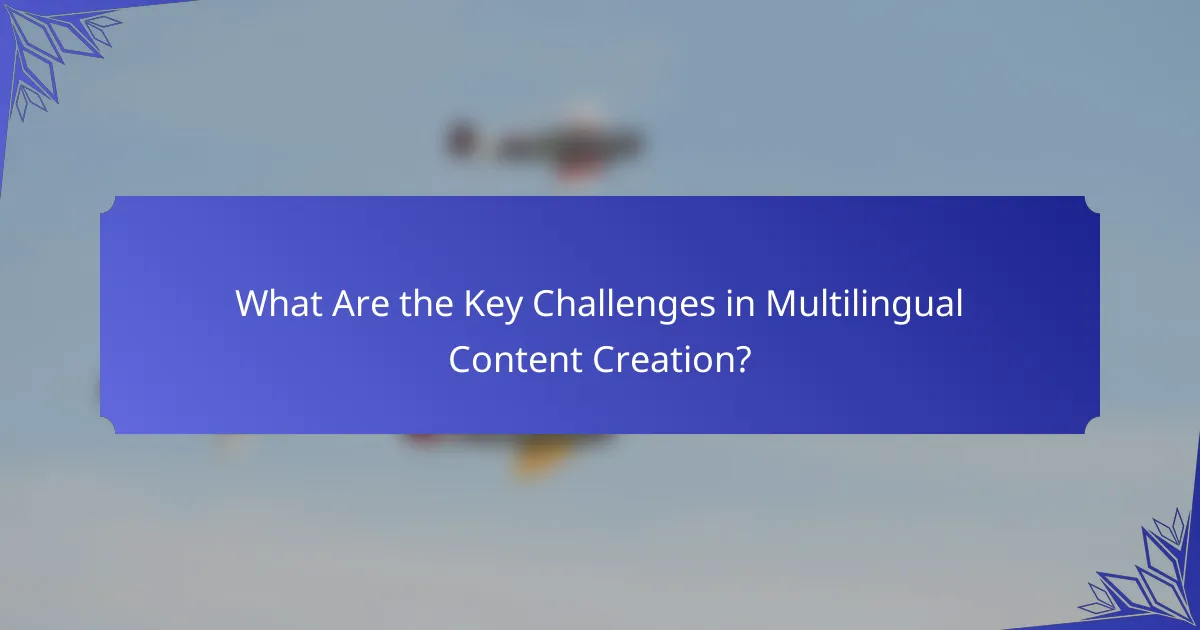
What Are the Key Challenges in Multilingual Content Creation?
Creating multilingual content involves several challenges, including maintaining consistency, addressing cultural nuances, and managing translation costs. These factors are crucial for ensuring that content resonates with diverse audiences while remaining accurate and accessible.
Maintaining Consistency Across Languages
Consistency in multilingual content is essential to uphold brand identity and messaging. This can be achieved by using a style guide that outlines terminology, tone, and formatting across all languages.
Utilizing translation memory tools can help maintain uniformity by storing previously translated phrases and ensuring they are used consistently. Regular reviews and updates of translated content are also necessary to keep it aligned with any changes in the original material.
Addressing Cultural Nuances
Cultural nuances play a significant role in how content is perceived. It’s important to adapt messages to reflect local customs, values, and idioms, which may vary widely even among languages that share similarities.
For example, humor that works in one culture may not translate well to another. Engaging local experts or native speakers during the content creation process can help identify these subtleties and enhance relevance.
Managing Translation Costs
Translation costs can vary significantly based on language pairs, complexity, and volume of content. It’s advisable to budget for these expenses early in the project to avoid unexpected financial strain.
Consider using a mix of human translators for nuanced content and machine translation for straightforward text to manage costs effectively. Additionally, prioritizing content that requires translation based on its importance can help allocate resources wisely.
